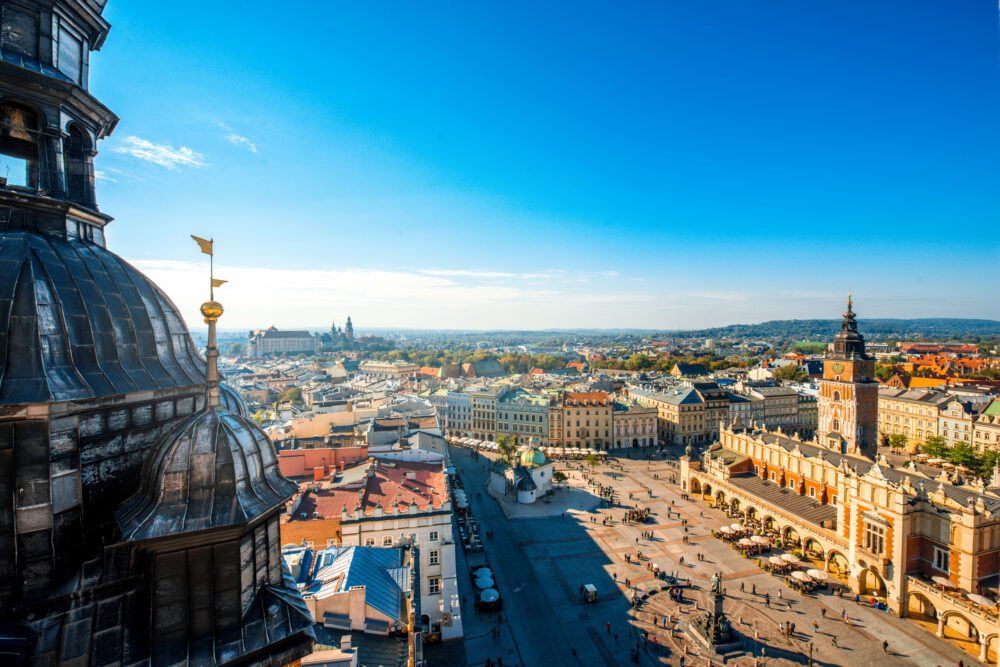
Introduction
Welcome to the enchanting city of Krakow, a jewel nestled in the heart of Poland that beckons travellers with its rich tapestry of history, culture, and charm. With roots dating back over a millennium, Krakow stands as a testament to the resilience of the human spirit, having weathered the storms of war, occupation, and revolution to emerge as a vibrant epicentre of art, architecture, and innovation. From the medieval streets of its Old Town to the solemn echoes of its wartime tragedies, Krakow offers a journey through time unlike any other, inviting visitors to unravel its secrets and immerse themselves in its storied past.
As you traverse the cobblestone streets of Krakow, you’ll find yourself transported to a bygone era, where the echoes of history reverberate through every corner. Explore the iconic landmarks of Rynek Glówny, Europe’s largest medieval square, where the imposing silhouette of St. Mary’s Basilica stands as a testament to Krakow’s enduring faith and resilience. Delve into the depths of Wawel Castle, a UNESCO World Heritage site steeped in legend and lore, where centuries of Polish kings and queens have left their mark on its grand halls and majestic towers. But Krakow is more than just a city frozen in time – it’s a dynamic hub of creativity and innovation, where centuries-old traditions merge seamlessly with contemporary trends to create a cultural melting pot unlike any other. So join me as we embark on a journey to discover the best things to do in Krakow, a city where history comes alive and every street holds a new adventure.
Table of Contents
Map of the Best Things to Do in Krakow
Rynek Glowny and the Cloth Hall
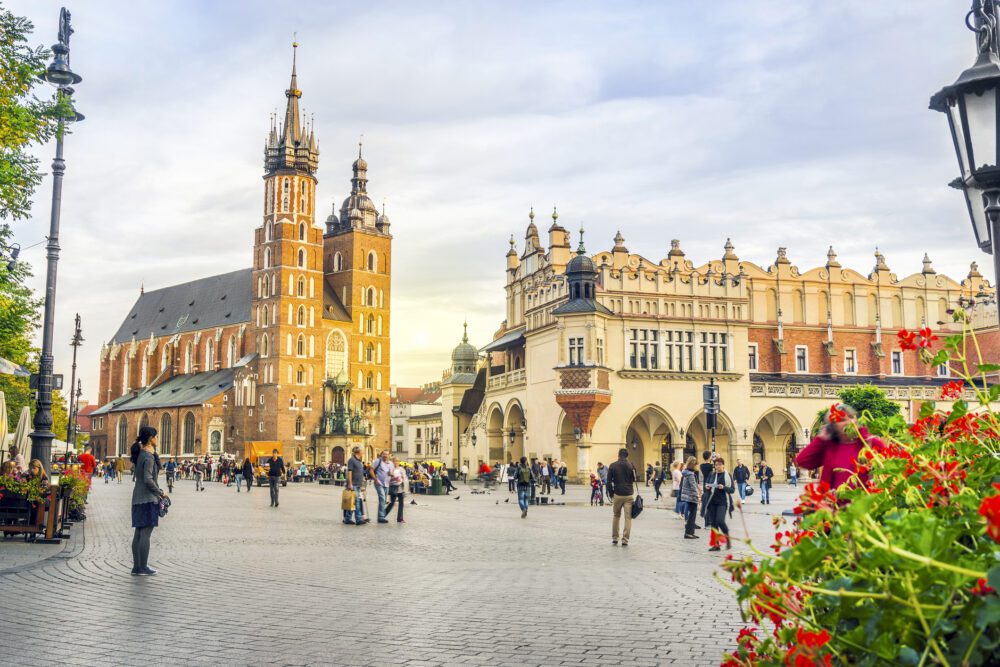
At the heart of Krakow lies the magnificent Rynek Glowny, a bustling medieval square that serves as the vibrant pulse of the city. Dating back to the 13th century, this expansive plaza teems with life and history, offering a glimpse into Krakow’s storied past and present. Dominating the square is the stunning St. Mary’s Basilica, a Gothic masterpiece adorned with intricate sculptures and stunning stained glass windows. Visitors can climb the tower for panoramic views of the cityscape, or simply bask in the beauty of its ornate interior. Surrounding the square is an array of charming cafes, restaurants, and shops, where travellers can indulge in a leisurely meal or pick up unique souvenirs to commemorate their visit.
To fully appreciate the grandeur of Rynek Glowny, I recommend visiting early in the morning or late in the evening when the crowds are thinner, allowing for a more intimate experience with this historic landmark. Be sure to take a stroll through the Cloth Hall, a historic market hall that has been trading goods for over 700 years. Here, you’ll find an array of local crafts, artwork, and souvenirs, making it the perfect place to pick up gifts for friends and family back home. And don’t forget to sample some traditional Polish fare from the food stalls scattered throughout the square – from hearty pierogi to crispy zapiekanka, there’s something to satisfy every palate.
St Mary’s Basilica
Standing proudly at the edge of Rynek Glowny, St. Mary’s Basilica is a towering testament to Krakow’s rich religious heritage and architectural prowess. Dating back to the 14th century, this stunning Gothic masterpiece enchants visitors with its intricate facade, adorned with delicate spires, elaborate carvings, and the iconic hejnal trumpet call that echoes across the cityscape. Step inside, and you’ll be greeted by a sanctuary of serenity and splendour, where the flickering glow of candlelight illuminates centuries-old frescoes, gilded altars, and a breathtaking array of stained glass windows. Among its most treasured features is the exquisite Altarpiece of Veit Stoss, a marvel of medieval craftsmanship that captivates all who behold its intricate detailing and emotive storytelling.
To make the most of your visit to St. Mary’s Basilica, consider joining a guided tour to gain deeper insights into the history and significance of this iconic landmark. Be sure to time your visit to coincide with the hourly hejnal trumpet call, a tradition that dates back to the Middle Ages and offers a poignant reminder of Krakow’s storied past. And for those seeking a truly unforgettable experience, ascend the narrow staircase to the top of the basilica’s tower, where panoramic views of the city await. Keep in mind that the tower can be quite crowded, so patience and a steady pace are key.
Rynek Underground Museum
Beneath the bustling streets of Rynek Glowny lies a hidden treasure trove of history and archaeology: the Rynek Underground Museum. This innovative museum offers a fascinating glimpse into Krakow’s past, showcasing the city’s evolution from its medieval origins to the vibrant metropolis it is today. As you descend into the depths of the museum, you’ll embark on a journey through time, traversing underground chambers and passageways that reveal the secrets of Krakow’s centuries-old marketplace. Through immersive exhibits, interactive displays, and state-of-the-art multimedia installations, visitors can explore archaeological finds, historical artefacts, and reconstructed scenes that bring the city’s rich heritage to life.
To ensure a seamless and enriching experience at the Rynek Underground Museum, I recommend booking tickets in advance, especially during peak tourist seasons when demand is high. Allow yourself plenty of time to explore the museum’s various galleries and exhibits at a leisurely pace, as there is much to see and discover. Consider joining a guided tour for deeper insights into the archaeological discoveries and historical narratives presented within the museum. And don’t forget to take advantage of the interactive elements, such as virtual reality simulations and hands-on activities, which offer a fun and engaging way to delve into Krakow’s past.
St Florian’s Gate and the Barbican Museum
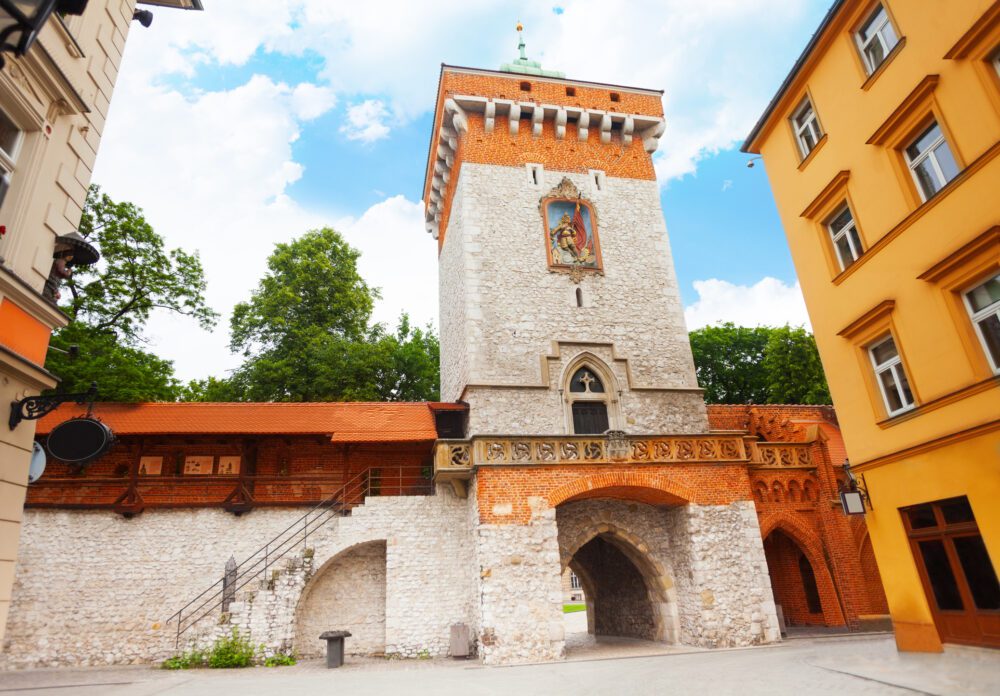
Standing as guardians of Krakow’s medieval past, St. Florian’s Gate and the Barbican are architectural marvels that transport visitors back in time to the city’s fortified origins. St. Florian’s Gate, constructed in the 14th century, served as a crucial entry point to the city, its imposing towers and fortified walls protecting Krakow from external threats. Today, this iconic landmark stands as a symbol of Krakow’s resilience and enduring spirit, welcoming travellers with its grandeur and historical significance. Adjacent to St. Florian’s Gate lies the Barbican, a circular fortress built in the 15th century to reinforce Krakow’s defences. Once a formidable stronghold, the Barbican now serves as a captivating museum, offering visitors the chance to explore its labyrinthine chambers, ramparts, and exhibits on medieval weaponry and warfare.
For an immersive experience of Krakow’s medieval heritage, I recommend starting your exploration at St. Florian’s Gate, where you can admire the intricate details of its Gothic architecture and imagine the bustling activity of merchants and travellers passing through its gates centuries ago. Be sure to climb the stairs to the top of the gate for panoramic views of the surrounding area, including the historic city walls and Planty Park. Afterwards, make your way to the Barbican, where you can delve into the history of Krakow’s fortifications and marvel at the well-preserved architecture of this ancient fortress. Consider purchasing a combined ticket for both attractions to save on admission fees and make the most of your visit.
Planty Park
Planty Park, encircling Krakow’s historic Old Town like a verdant embrace, offers a tranquil retreat from the bustling city streets. Originally serving as the defensive moat for Krakow’s medieval fortifications, Planty Park was transformed into a picturesque green space in the 19th century, following the dismantling of the city walls. Today, this sprawling parkland provides a peaceful sanctuary where locals and visitors alike can escape the urban hustle and reconnect with nature. As you meander along its winding pathways, you’ll encounter a symphony of sights and sounds – from fragrant flower beds and towering trees to serene ponds and charming statues – all set against the backdrop of Krakow’s architectural wonders.
To make the most of your time in Planty Park, I recommend starting your exploration at one of the park’s main entrances, such as St. Florian’s Gate or the Barbican, and following the circular route that encircles the Old Town. This leisurely stroll will allow you to fully appreciate the park’s diverse landscapes and landmarks, including the enchanting Planty Gardens, the majestic Krakus Mound, and the picturesque Planty Fountain. Consider bringing along a picnic basket and blanket to enjoy a leisurely lunch or snack amidst the park’s lush surroundings. And don’t forget to keep an eye out for the various events and performances that take place in the park throughout the year, from outdoor concerts to cultural festivals.
Wawel Royal Castle and Cathedral
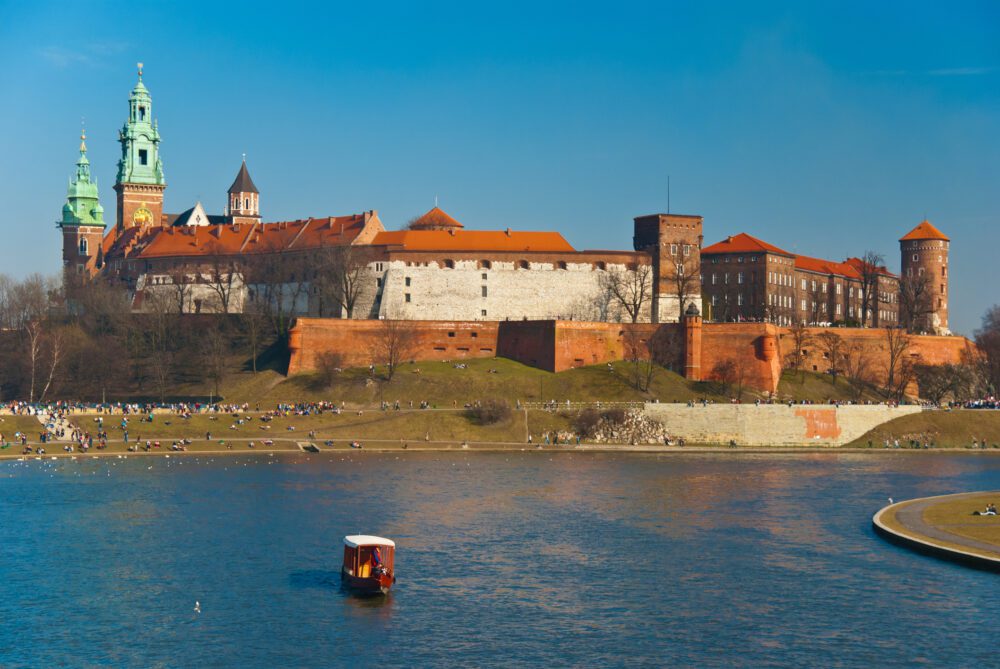
Perched atop a limestone hill overlooking the Vistula River, the Wawel Royal Castle and Cathedral stand as enduring symbols of Poland’s royal legacy and cultural heritage. Dating back over a thousand years, these majestic structures have borne witness to the triumphs and tribulations of Poland’s monarchs, from the grandeur of the Renaissance to the turmoil of war and occupation. The castle’s architectural ensemble encompasses a diverse array of styles, including Gothic, Renaissance, and Baroque, reflecting the evolving tastes and aspirations of Poland’s rulers over the centuries. Within its walls lies a treasure trove of historical artefacts, opulent chambers, and priceless works of art, offering visitors a glimpse into the splendour of Poland’s royal past.
To make the most of your visit to the Wawel Royal Castle and Cathedral, I recommend purchasing a combined ticket that grants access to both attractions, allowing you to explore their interconnected histories and architectural marvels at your own pace. Begin your journey at the castle’s main entrance, where you’ll be greeted by the majestic Sigismund Tower and the iconic courtyard, adorned with Renaissance arcades and elegant gardens. Be sure to tour the castle’s lavishly decorated State Rooms, including the opulent Royal Apartments and the exquisite Crown Treasury and Armory, which house a dazzling array of regal regalia and weaponry. Afterwards, venture to the adjacent Wawel Cathedral, where you can marvel at its towering spires, intricate chapels, and the legendary Sigismund Bell, one of the largest bells in Europe. Climb to the top of the cathedral’s bell tower for panoramic views of Krakow’s skyline and the surrounding countryside, and don’t forget to pay your respects at the tomb of Poland’s beloved patron saint, St. Stanislaus.
Vistula River Cruise
Embark on a leisurely voyage along the storied waters of the Vistula River with a scenic cruise that offers a unique perspective on Krakow’s rich history and picturesque landscapes. Flowing through the heart of the city, the Vistula has long been a vital artery of trade and transportation, shaping the fortunes of Krakow and its inhabitants for centuries. As you drift downstream, you’ll pass by iconic landmarks such as Wawel Castle, Kazimierz District, and the historic Podgórze neighbourhood, each offering a glimpse into Krakow’s multifaceted past and vibrant present. Along the way, knowledgeable guides provide fascinating insights into the river’s role in shaping Krakow’s identity, from its medieval origins as a bustling port to its transformation into a scenic waterway beloved by locals and visitors alike.
To make the most of your Vistula River cruise experience, opt for a guided tour that includes informative commentary in multiple languages, ensuring that you gain a deeper understanding of Krakow’s history and culture as you navigate its waterways. Choose a cruise that departs during the late afternoon or early evening to enjoy the enchanting spectacle of the sun setting over the city skyline, casting a golden glow upon the river’s tranquil waters. Be sure to bring along a camera to capture the stunning views and memorable moments, whether it’s the reflection of Wawel Castle in the river’s shimmering surface or the lively ambience of riverside cafes and bars. Don’t forget to dress appropriately for the weather and wear comfortable shoes, as you may have the opportunity to disembark and explore some of the riverside attractions during the cruise.
Kazimierz Jewish Quarter
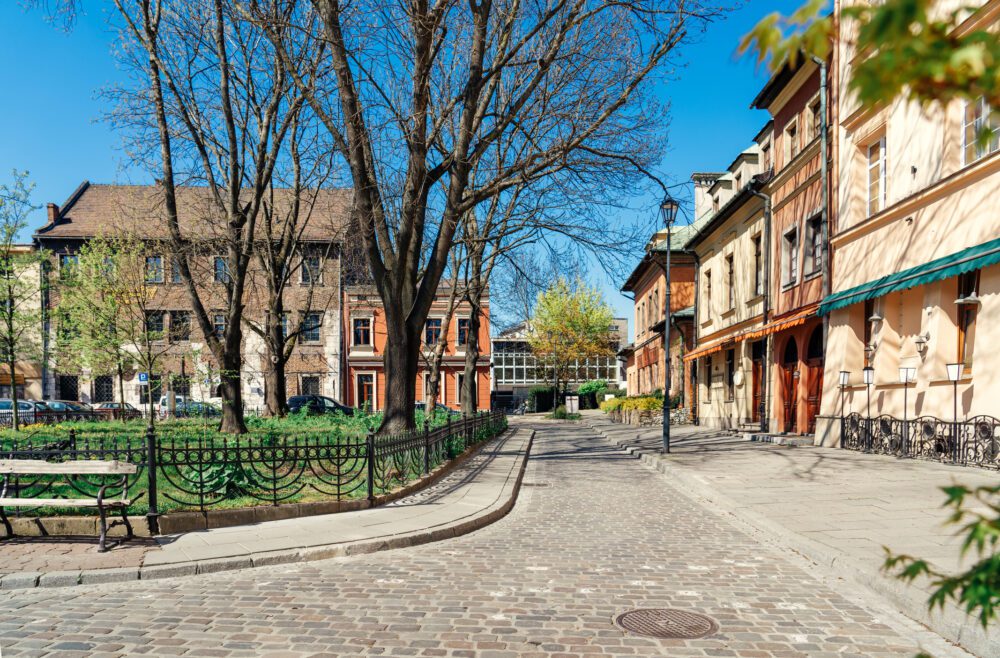
Nestled within the heart of Krakow lies the Jewish Quarter, or Kazimierz, a neighbourhood steeped in centuries of history and culture. Once a thriving centre of Jewish life and culture, Kazimierz bore witness to the vibrant tapestry of Jewish traditions, art, and commerce that flourished within its narrow streets and bustling squares. Despite the devastation wrought by the Holocaust and decades of neglect during the communist era, Kazimierz has experienced a remarkable revival in recent years, emerging as a vibrant hub of creativity, cuisine, and community. Today, visitors to the Jewish Quarter can explore its rich heritage through its well-preserved synagogues, atmospheric courtyards, and eclectic array of galleries, cafes, and restaurants.
To fully immerse yourself in the ambience of the Jewish Quarter, I recommend starting your exploration at the heart of Kazimierz, the Old Synagogue, one of the oldest surviving synagogues in Poland and a poignant reminder of Krakow’s Jewish legacy. From there, wander through the labyrinthine streets of Kazimierz, where every corner holds a new discovery – from the haunting remnants of the Jewish Ghetto to the vibrant street art and colourful murals that adorn its walls. Be sure to visit the historic Remuh Synagogue and Cemetery, where generations of Krakow’s Jewish community are laid to rest, and the lively Plac Nowy market square, home to a bustling flea market and some of the city’s best street food stalls. And don’t miss the opportunity to sample traditional Jewish cuisine at one of Kazimierz’s many kosher restaurants, where you can savour classic dishes such as gefilte fish, matzo ball soup, and hearty cholent.
Ghetto Heroes Square
Ghetto Heroes Square, located in the heart of Krakow’s former Jewish Ghetto, stands as a powerful memorial to the tragic events of World War II and the Holocaust. This solemn square, adorned with 33 oversized bronze chairs, serves as a poignant reminder of the thousands of lives lost during the darkest chapter of Krakow’s history. Each chair represents a different aspect of Jewish life and culture, from family and community to education and faith, paying tribute to the vibrant spirit and resilience of Krakow’s Jewish community. Surrounded by remnants of the ghetto walls and buildings, Ghetto Heroes Square serves as a sacred space for reflection and remembrance, inviting visitors to pause and honour the memory of those who perished.
When visiting Ghetto Heroes Square, take a moment to contemplate the significance of each chair and the stories it represents. Consider joining a guided tour or audio guide to gain deeper insights into the history of the Krakow Ghetto and the experiences of its inhabitants during the Holocaust. After paying your respects at the memorial, take time to explore the surrounding area, which is home to several other important Holocaust memorials and historic sites, including the nearby Schindler’s Factory Museum and the Eagle Pharmacy.
Museum of Contemporary Art
The Museum of Contemporary Art in Krakow, commonly known as MOCAK, stands as a beacon of artistic innovation and expression in the heart of the city. Founded in 2011, this dynamic institution showcases a diverse array of contemporary artworks from both Polish and international artists, offering visitors a thought-provoking journey through the cutting-edge trends and ideas shaping the modern art world. Housed in a striking modernist building designed by the acclaimed architect Claudio Nardi, MOCAK’s sleek galleries and expansive exhibition spaces provide the perfect backdrop for exploring the complexities of contemporary art in all its forms, from painting and sculpture to video art, installations, and performance.
To make the most of your visit to MOCAK, I recommend checking the museum’s website in advance to see what exhibitions are currently on display and plan your visit accordingly. Consider joining a guided tour or taking advantage of the museum’s audio guide rental service to gain deeper insights into the artworks and artists featured in the exhibitions. Be sure to allocate enough time to explore the museum’s permanent collection as well as any temporary exhibitions that may be on view during your visit. After immersing yourself in the world of contemporary art, take time to relax and reflect in MOCAK’s scenic outdoor courtyard, where you can enjoy panoramic views of Krakow’s skyline and unwind amidst the tranquil ambience.
Schindler’s Enamel Factory
A visit to Schindler’s Factory is a profound and poignant journey into one of the darkest chapters of human history. Housed in the former enamel factory of Oskar Schindler, the German industrialist credited with saving the lives of over 1,200 Jews during the Holocaust, this museum offers a sobering glimpse into the realities of life under Nazi occupation in Krakow. Through a series of immersive exhibitions, including artefacts, documents, photographs, and multimedia installations, visitors are transported back in time to the harrowing days of World War II, where they can trace the experiences of Krakow’s Jewish community and learn about Schindler’s remarkable acts of courage and compassion.
Due to its popularity, Schindler’s Factory can get quite crowded, especially during peak tourist seasons. To avoid long lines and ensure a seamless experience, I recommend booking tickets in advance online or arriving early in the day. Consider joining a guided tour to gain deeper insights into the history and significance of the museum’s exhibitions, as well as Schindler’s extraordinary legacy. Be prepared for an emotionally impactful experience, as the museum’s exhibits can be quite moving and thought-provoking. Take time to explore the surrounding neighbourhood of Podgórze, where you can visit other important Holocaust memorials and historic sites, including the nearby Ghetto Heroes Square and the remnants of the Krakow Ghetto walls.
Kosciuszko’s Mound
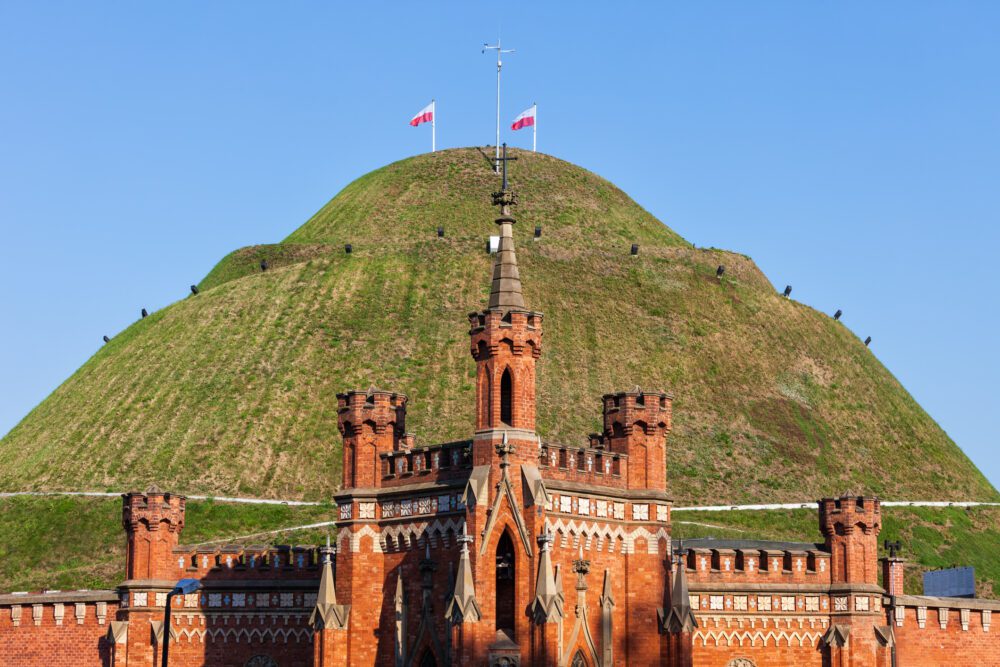
Kosciuszko’s Mound offers panoramic views of Krakow and its surrounding landscapes, while also serving as a powerful symbol of Polish patriotism and resilience. Named after Tadeusz Kosciuszko, a Polish national hero and military leader who fought for Poland’s independence in the 18th century, the mound was constructed in the early 19th century to honour his memory and commemorate his contributions to the nation. Rising 34 meters above the surrounding terrain, the mound provides visitors with a unique vantage point from which to admire the beauty of Krakow’s historic Old Town, the winding curves of the Vistula River, and the lush greenery of the surrounding countryside.
To reach Kosciuszko’s Mound, visitors can embark on a scenic walk or bike ride along the trails that wind their way through the surrounding parkland. Alternatively, taxis and public transportation are also available for those who prefer not to hike. Once at the summit, take time to explore the mound’s observation platform and soak in the breathtaking views – particularly stunning during sunrise or sunset. Consider bringing along a picnic to enjoy amidst the peaceful surroundings, or simply relax and unwind as you take in the beauty of Krakow from above. Don’t forget to visit the nearby Kosciuszko Park, where you can stroll through tree-lined pathways, admire beautiful gardens, and learn more about the life and legacy of Tadeusz Kosciuszko at the adjacent museum.
Polish Aviation Museum
Step into the exhilarating world of aviation history at the Polish Aviation Museum, a must-visit destination for enthusiasts of flight and innovation. Located on the site of the former Rakowice-Czyżyny airfield, this expansive museum boasts an impressive collection of over 200 aircraft, spanning the early days of aviation to the modern era of jet propulsion. Founded in 1964, the museum’s mission is to preserve and showcase Poland’s rich aviation heritage, including rare and unique aircraft from both military and civilian contexts. Visitors can marvel at iconic planes such as the legendary PZL P.11 fighter, the versatile Antonov An-2 biplane, and the sleek MiG-15 jet, among many others, while learning about the pioneering pilots and engineers who shaped the course of aviation history in Poland and beyond.
To make the most of your visit to the Polish Aviation Museum, allocate ample time to explore its extensive collection, which is housed in multiple hangars and outdoor display areas. Consider joining a guided tour or audio guide rental service to gain deeper insights into the history and significance of the aircraft on display, as well as the stories of the individuals who flew them. Be sure to check the museum’s website in advance for any special exhibitions or events that may be taking place during your visit, and plan your itinerary accordingly.
Wieliczka Salt Mine
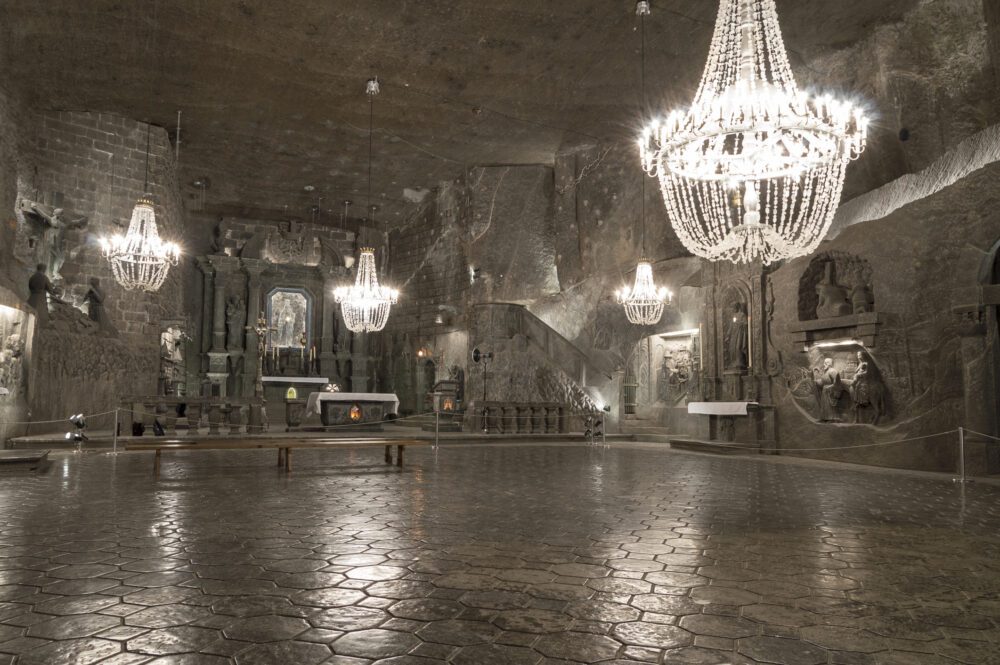
Journey beneath the surface of the earth to explore one of Poland’s most fascinating and unique attractions: the Wieliczka Salt Mine. Dating back over 700 years, this UNESCO World Heritage site is a testament to the ingenuity and resourcefulness of generations of miners who toiled deep underground to extract one of the world’s most precious commodities: salt. Descending into the labyrinthine tunnels of the mine, visitors are transported back in time to a world of darkness and industry, where salt was once known as “white gold” and fueled the wealth and prosperity of the region. Along the way, you’ll encounter breathtaking chambers and chapels carved entirely out of salt by skilled artisans, including the magnificent Chapel of St. Kinga, whose intricate sculptures and chandeliers rival those found in any cathedral above ground.
To fully experience the wonders of the Wieliczka Salt Mine, I recommend joining a guided tour, which will provide you with valuable insights into the history and significance of this remarkable underground complex. Be sure to wear comfortable shoes and dress warmly, as temperatures underground can be cool year-round. Consider purchasing tickets in advance to avoid long wait times, especially during peak tourist seasons. And don’t forget to bring along a camera to capture the stunning sights and unique atmosphere of the mine, from the shimmering salt crystals to the majestic underground lakes. After your tour, be sure to visit the surface-level attractions, including the museum, souvenir shops, and onsite restaurants, where you can sample traditional Polish cuisine made with salt mined right from the depths below.
Day Trip to Auschwitz-Birkenau
Embark on a solemn and deeply moving journey with a day trip to Auschwitz-Birkenau, the site of one of the most horrific atrocities in human history. Located just outside Krakow, Auschwitz-Birkenau was the largest Nazi concentration and extermination camp during World War II, where over 1.1 million people, the majority of whom were Jews, were systematically murdered by the Nazis. Today, the site stands as a powerful memorial to the victims of the Holocaust, serving as a reminder of the unimaginable suffering and loss endured by millions of innocent lives. Visitors to Auschwitz-Birkenau can explore the preserved barracks, gas chambers, and crematoria, as well as the haunting remnants of the railway tracks that brought countless victims to their final destination.
Due to the sensitive nature of the site, it is highly recommended to book a guided tour or join an organized group excursion to Auschwitz-Birkenau. Knowledgeable guides provide valuable context and insights into the history of the camps, ensuring a respectful and informative experience for visitors. Be prepared for an emotionally challenging visit, as the exhibits and artefacts on display offer a harrowing glimpse into the horrors of the Holocaust. Respectful attire is required, and photography is generally not permitted inside the museum buildings out of respect for the victims. After your tour, take time to reflect and pay your respects at the memorials and monuments scattered throughout the site, including the poignant International Monument to the Victims of Auschwitz.
Conclusion
Krakow stands as a city of remarkable contrasts and enduring resilience, where the echoes of history mingle seamlessly with the rhythms of modern life. From the medieval splendour of its Old Town to the solemn reminders of its wartime tragedies, Krakow offers visitors a multifaceted journey through the annals of time, where every street corner holds a new story waiting to be discovered. Whether you’re exploring the iconic landmarks of Wawel Castle and St. Mary’s Basilica, immersing yourself in the vibrant atmosphere of Kazimierz and Rynek Glowny, or paying homage to the victims of the Holocaust at Auschwitz-Birkenau, Krakow promises an unforgettable experience that will leave a lasting impression on all who traverse its storied streets.
As you bid farewell to this enchanting city, take with you the memories of its timeless beauty, the warmth of its hospitality, and the lessons of its tumultuous past. Whether you’re a history enthusiast, a culture vulture, or simply a traveller in search of adventure, Krakow welcomes you with open arms, inviting you to explore its rich tapestry of sights, sounds, and sensations. So come, wander its cobblestone streets, savour its culinary delights, and immerse yourself in the magic of Krakow – a city where the past meets the present, and every moment is infused with the promise of new discoveries.
